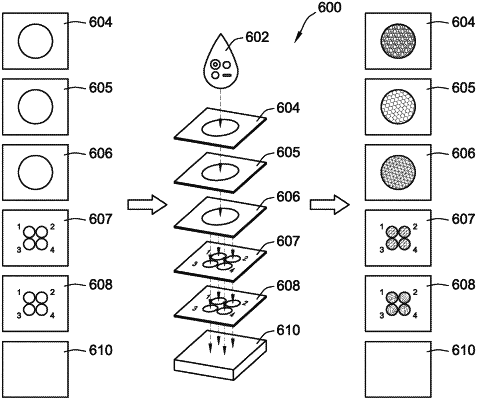|
21. A method for providing a microfluidic device, the method comprising: providing a first layer of a porous material with pores having a first average pore size, the first layer having a liquid-receiving area through which a liquid sample is received into the microfluidic device; stacking below the first layer a distinct second layer of another porous material having pores of a second average pore size; and positioning a channel within the second layer, the channel having a starting end positioned at least in part in an overlapping manner with the liquid-receiving area of the first layer, the channel having a terminating end extending laterally at a predetermined wicking distance from the starting end; wherein, the first average pore size and the second average pore size are selected such that, upon the receiving of the liquid sample, a wicking effect is caused in which at least some of the liquid sample flows along the channel at least a portion of the wicking distance between the starting end and the terminating end.
|
